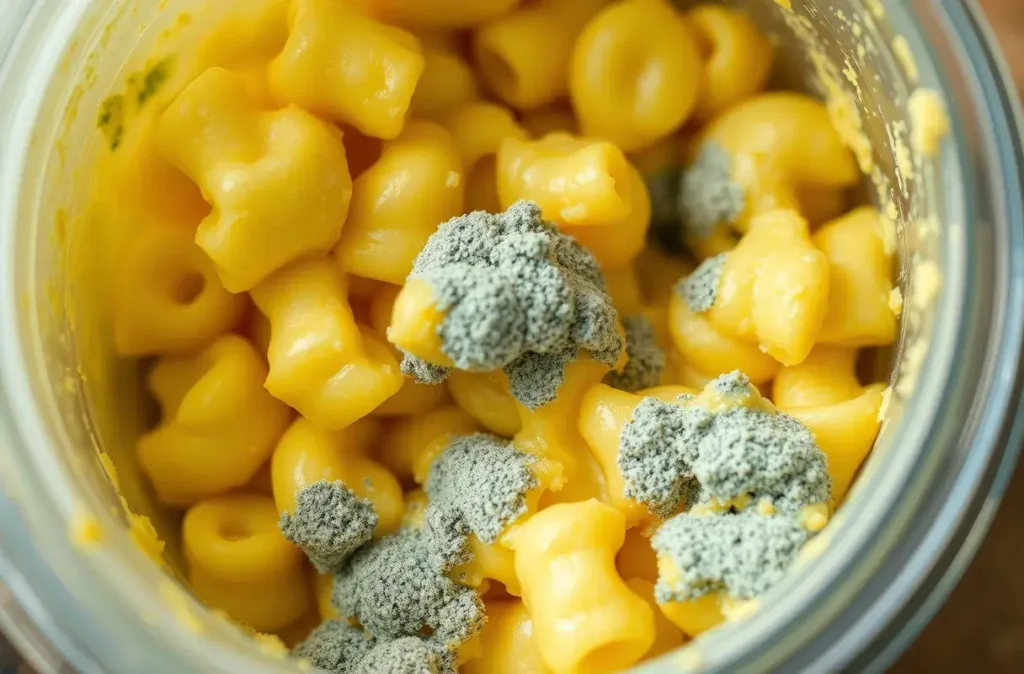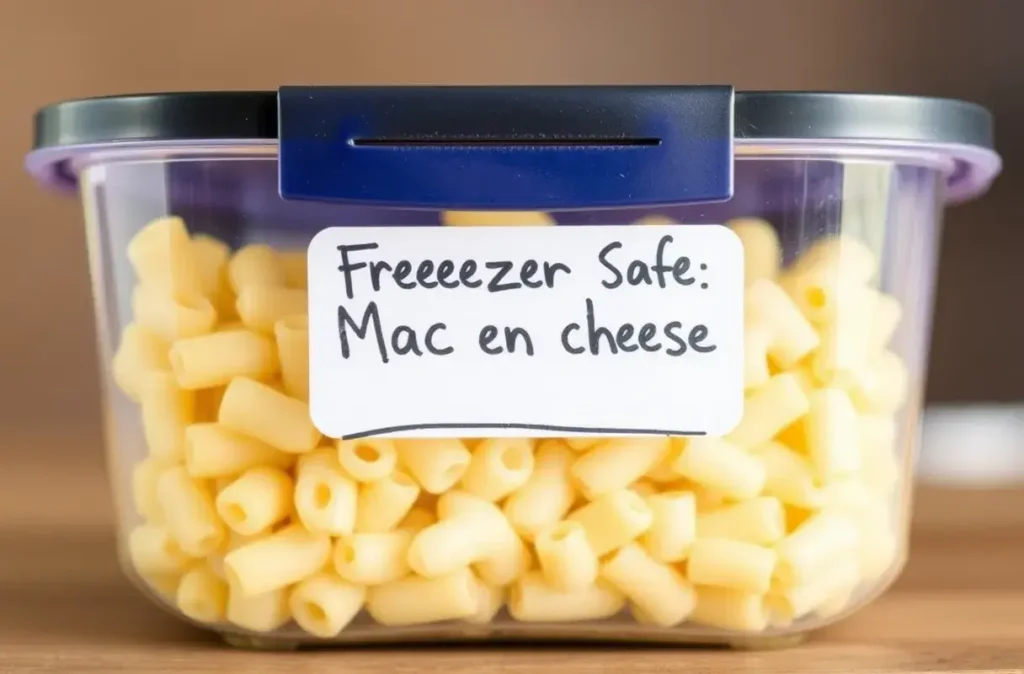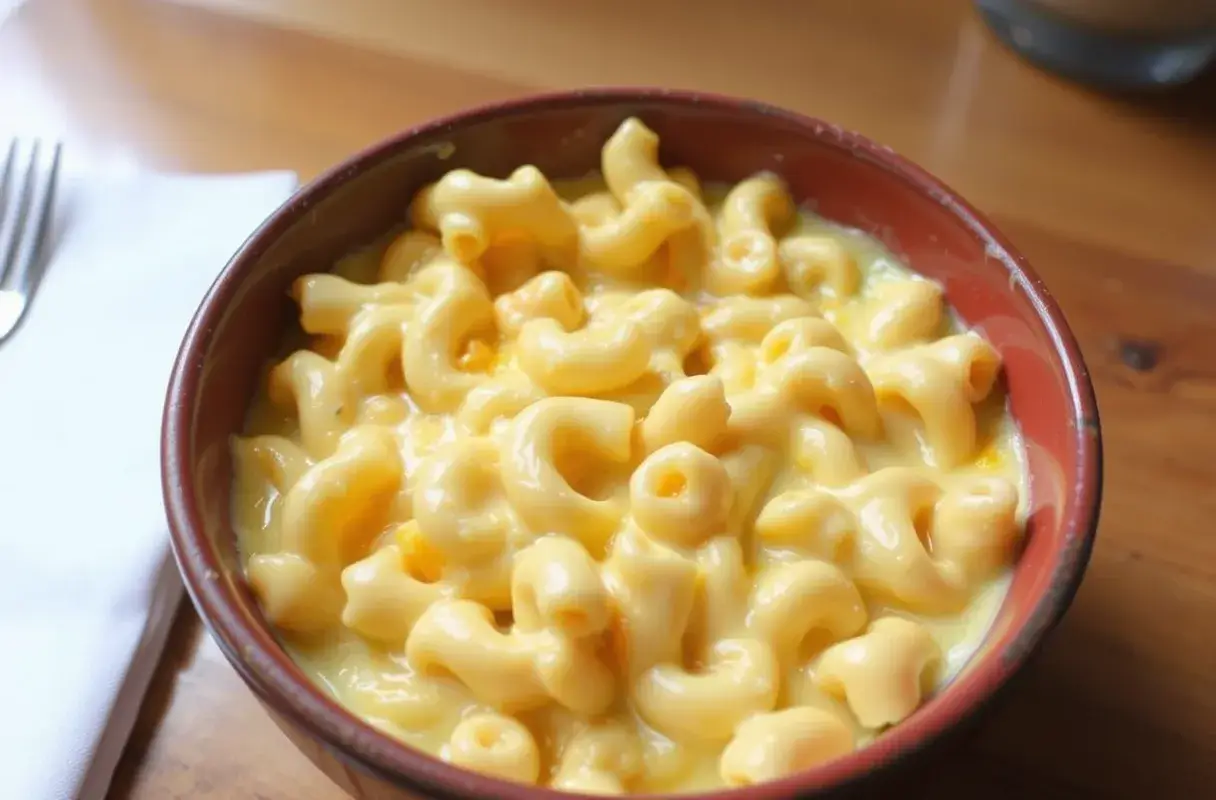“Can I eat week-old mac and cheese?” is a question that often pops up when leftovers linger in the refrigerator longer than planned. Mac and cheese, with its creamy sauce and comforting flavor, is a favorite for many.
But like any perishable dish, it has its limits. Understanding food safety guidelines can help you decide whether that container in the back of your fridge is still good. In this article, we’ll explore recommended storage times, signs of spoilage, best practices for handling leftovers, and the potential risks of eating week-old mac and cheese.
How Long Can Mac and Cheese Be Safely Stored in the Fridge?
The general rule for refrigerated leftovers applies to mac and cheese as well:
- 3-5 Days in the Fridge: Properly stored mac and cheese typically remains safe for about 3-5 days. After this window, the risk of spoilage and bacterial growth increases dramatically.
- 1-2 Months in the Freezer: If you anticipate not finishing the leftovers promptly, freezing is an excellent option. Frozen mac and cheese can last about 1-2 months. Be sure to thaw it safely in the fridge before reheating.
Once the dish passes the 5-day mark, it’s nearing or has surpassed the recommended timeframe. By the time it’s a full week old, consuming it may pose health risks.
Key Factors That Impact the Shelf Life of Leftover Mac and Cheese
Several factors influence how quickly mac and cheese spoils:
- Ingredients: Dishes rich in dairy (milk, cheese, cream) spoil faster than non-dairy options. The high moisture content and nutrients create an ideal environment for bacteria.
- Temperature: Keeping mac and cheese at 40°F (4°C) or below slows bacterial growth. A well-maintained refrigerator is crucial.
- Storage Containers: Airtight containers help minimize exposure to moisture and airborne bacteria. Proper sealing extends freshness and quality.
- Initial Handling: How quickly you cooled and stored the mac and cheese after cooking matters. The sooner it hits the fridge, the better its chances of remaining safe.
If your mac and cheese has been sitting in the fridge for a week, it’s beyond the recommended 3-5 day window. Even if it looks or smells fine, invisible bacteria may have multiplied, increasing the risk of foodborne illness.
Signs That Week-Old Mac and Cheese Has Gone Bad
Deciding whether to eat week-old mac and cheese requires careful inspection. Look for the following signs of spoilage:
Visual Indicators of Spoiled Mac and Cheese

- Mold Growth: Any sign of mold—black, green, or white—is an immediate red flag.
- Color Changes: If the dish appears dull, grayish, or has dark spots, it’s likely spoiled.
Odor Changes in Leftover Mac and Cheese
- Sour or Rancid Odor: A foul, sour, or “off” smell strongly indicates bacterial activity. Trust your nose; if it smells bad, don’t eat it.
Texture Changes in Stored Mac and Cheese
- Slimy or Sticky Feel: If the once-creamy sauce feels tacky or slimy, that’s a sign of bacterial breakdown and spoilage.
Taste Test (With Caution)
If all other signs seem okay, you might consider a tiny taste. However, this should be a last resort, and if it tastes even slightly off, discard it immediately. Remember, taste alone isn’t a foolproof test—bacteria or toxins may not have a strong flavor.
Pro Tip: When in doubt, throw it out. It’s not worth risking your health over a few bites of questionable leftovers.

Should You Eat Week-Old Mac and Cheese?
The short answer is: probably not. Here’s why:
- Bacterial Overgrowth: After 5 days, the chances of harmful bacteria like Listeria or Salmonella significantly increase.
- Dairy Products Spoil Easily: The creamy sauce that makes mac and cheese delicious also makes it prone to spoilage.
- Foodborne Illness Risk: Even if it looks and smells fine, eating week-old mac and cheese can cause gastrointestinal distress.
Unless you froze it promptly and handled it perfectly, week-old mac and cheese is best discarded.
Best Practices for Safely Storing Leftover Mac and Cheese
Preventing spoilage begins the moment you finish cooking. Here are some tips:
Refrigeration Tips for Mac and Cheese
- Cool Quickly: Transfer leftovers to the fridge within 2 hours of cooking. Leaving it out longer allows bacteria to thrive.
- Airtight Containers: Use containers with tight-fitting lids to keep out moisture and contaminants.
- Label with Dates: Always note when the leftovers were made or stored. This takes the guesswork out of deciding if it’s still safe.
Freezing Tips for Long-Term Mac and Cheese Storage
- Freeze Promptly: If you know you won’t eat it within 3-5 days, freeze it as soon as possible.
- Freezer-Safe Containers: Sturdy, freezer-proof containers or bags prevent freezer burn and off-flavors.
- Safe Thawing: Thaw in the refrigerator, not at room temperature, to maintain optimal food safety.
By following these guidelines, you can extend the life of your mac and cheese and reduce the chance of spoilage.

Understanding Food Safety Guidelines
Guidelines from health agencies like the USDA emphasize caution when it comes to perishable foods. Dairy-based dishes fall into the high-risk category. The recommended time limits aren’t arbitrary; they’re based on scientific research about how quickly bacteria multiply at various temperatures.
Why the Strict Timelines? Bacteria like Staphylococcus aureus, Salmonella, and Listeria can be present even if you prepare your dish in a clean kitchen. Refrigeration slows bacterial growth but doesn’t stop it entirely. Over time, bacterial populations can reach levels that cause illness, even if the food still appears normal.
The Difference Between Homemade and Store-Bought Mac and Cheese
Homemade Mac and Cheese
Homemade versions often use fresh dairy and lack preservatives. While tastier and fresher, they spoil faster. The 3-5 day guideline especially applies to homemade dishes due to their perishable nature.
Store-Bought or Pre-Packaged Mac and Cheese
Pre-packaged mac and cheese (especially the boxed variety) may have preservatives, but once prepared, it’s similar to homemade in terms of spoilage risks. The same 3-5 day rule applies, and week-old leftovers should still be avoided.
Cheese Type Matters
The type of cheese used can influence shelf life slightly. Harder cheeses like cheddar may have marginally more resilience than softer cheeses, but this doesn’t significantly extend the recommended storage time. The combination of milk, cream, and butter in mac and cheese still creates an environment conducive to bacterial growth.
Health Consequences of Eating Spoiled Mac and Cheese
What’s the worst that could happen if you eat week-old mac and cheese?
- Mild Discomfort: Nausea, vomiting, and diarrhea are common symptoms of foodborne illness.
- More Severe Symptoms: In some cases, contaminated food can lead to dehydration, fever, and abdominal cramps. Vulnerable populations (like young children, the elderly, and those with compromised immune systems) are at higher risk for complications.
- Long-Term Effects: Most foodborne illnesses are short-lived, but severe infections can require medical attention and antibiotics.
This underscores why a cautious approach is wise.
How to Reheat Leftover Mac and Cheese Safely

If your mac and cheese is still within the safe 3-5 day window, reheating it properly can kill some bacteria that may have grown:
- Use a Thermometer: Heat leftovers to an internal temperature of 165°F (74°C).
- Oven Method: Add a splash of milk, cover with foil, and heat in a 350°F (177°C) oven until hot throughout.
- Stovetop: Warm gently over low heat, stirring frequently, and add a little milk to restore creaminess.
- Microwave: Stir often and heat in short intervals, checking the temperature.
Proper reheating won’t reverse spoilage if it’s already occurred, but it can ensure safe consumption when within the recommended timeframe.
Beyond Taste: The Environmental and Financial Costs of Food Waste
Discarding week-old mac and cheese might feel wasteful, but consider the bigger picture:
- Environmental Impact: Reducing food waste helps conserve resources and reduce greenhouse gas emissions.
- Financial Savings: By properly portioning and storing food, you minimize waste and save money over time.
Instead of risking illness, learn from the experience and adjust your cooking quantities. Prepare smaller batches or freeze leftovers promptly so you’re not throwing out whole containers of food later.
Tips to Reduce Leftover Waste
- Plan Ahead: Cook only what you anticipate eating within a few days.
- Freeze in Portions: Divide leftovers into smaller containers before freezing. This way, you only thaw what you need.
- Share Extras: If you’ve made too much, consider sharing with friends or neighbors, as long as it’s still fresh.
By adopting these strategies, you’ll face the “Can I eat week-old mac and cheese?” dilemma less frequently.
Cultural and Regional Differences
In some cultures, leaving food out for extended periods is common, but as global standards for food safety evolve, so do local habits. Modern refrigeration and food safety guidelines are widely accepted worldwide. While your grandparents may have eaten leftovers that sat out longer, current knowledge emphasizes caution.
Beyond Mac and Cheese: General Leftover Safety

The principles discussed here apply to many other dishes as well. Soups, casseroles, meat, and dairy-based sauces all have similar storage rules. By mastering leftover safety for mac and cheese, you’re better equipped to handle all your leftovers responsibly.
Frequently Asked Questions (FAQs) About Leftover Food Safety
How long can mac and cheese sit out?
Mac and cheese should not sit out for more than 2 hours. If left at room temperature longer, bacteria can proliferate rapidly. When in doubt, discard it View Details
Is cheese still good after sitting out all night?
No, cheese left out all night is unsafe. Most cheeses require refrigeration to remain fresh. Extended time at room temperature can lead to bacterial growth and spoilage View Details
Can mashed potatoes sit out for 3 hours?
Like mac and cheese, mashed potatoes are also perishable. They should not sit out for more than 2 hours. The same principles apply: room temperature encourages bacterial growth.
What if the mac and cheese smells and looks fine?
Even if there are no visible signs or foul smells, bacteria may still be present. Stick to the recommended timelines and don’t rely solely on appearance or scent.
Can I eat week-old mac and cheese?
While it might be tempting, week-old mac and cheese is not recommended. Even if it shows no obvious signs of spoilage, bacterial growth could have occurred. The general recommendation is to consume refrigerated mac and cheese within 3-5 days for best quality and safety View Details
Conclusion: Can I eat week-old mac and cheese?
“Can I eat week-old mac and cheese?” The safest answer is usually no. While it’s tempting to push the limits of leftover shelf life, the health risks outweigh the potential reward. After about 5 days, bacterial growth becomes a serious concern, and by 7 days, the chances of spoilage are high.
Rather than risking foodborne illness, rely on proper storage techniques, strict adherence to recommended timelines, and a discerning eye for spoilage signs. Freeze what you can’t eat promptly, reheat leftovers thoroughly, and remember that when in doubt, it’s always safer to throw it out. By following these guidelines, you’ll enjoy your mac and cheese with confidence and peace of mind.
